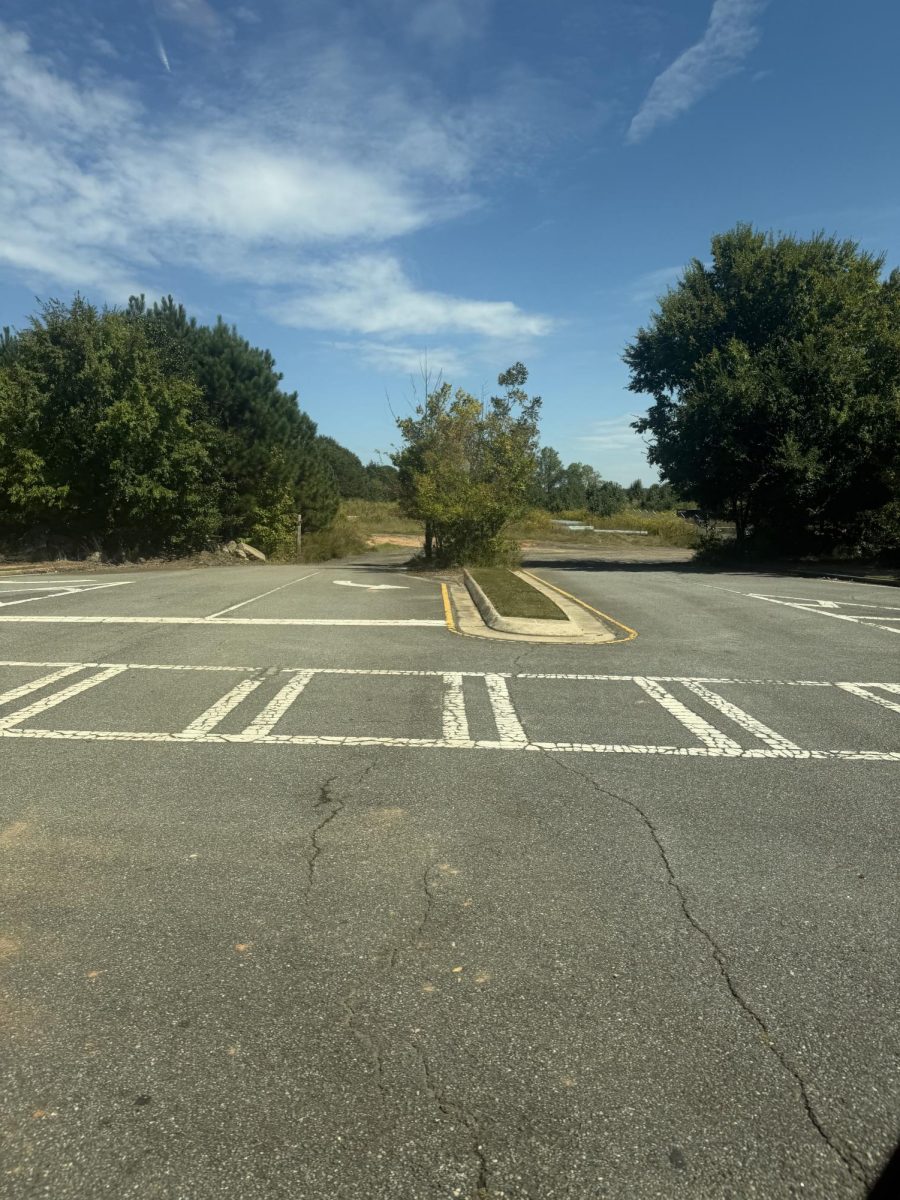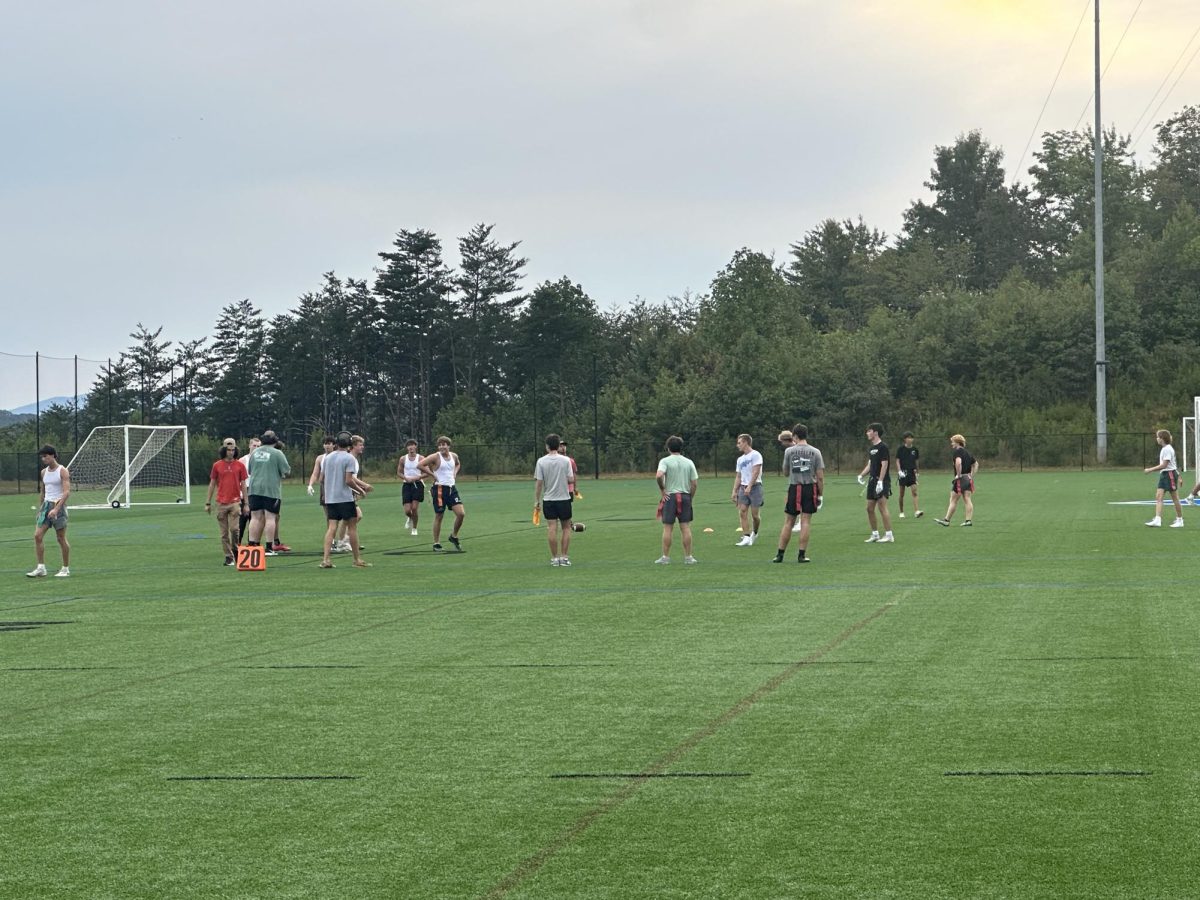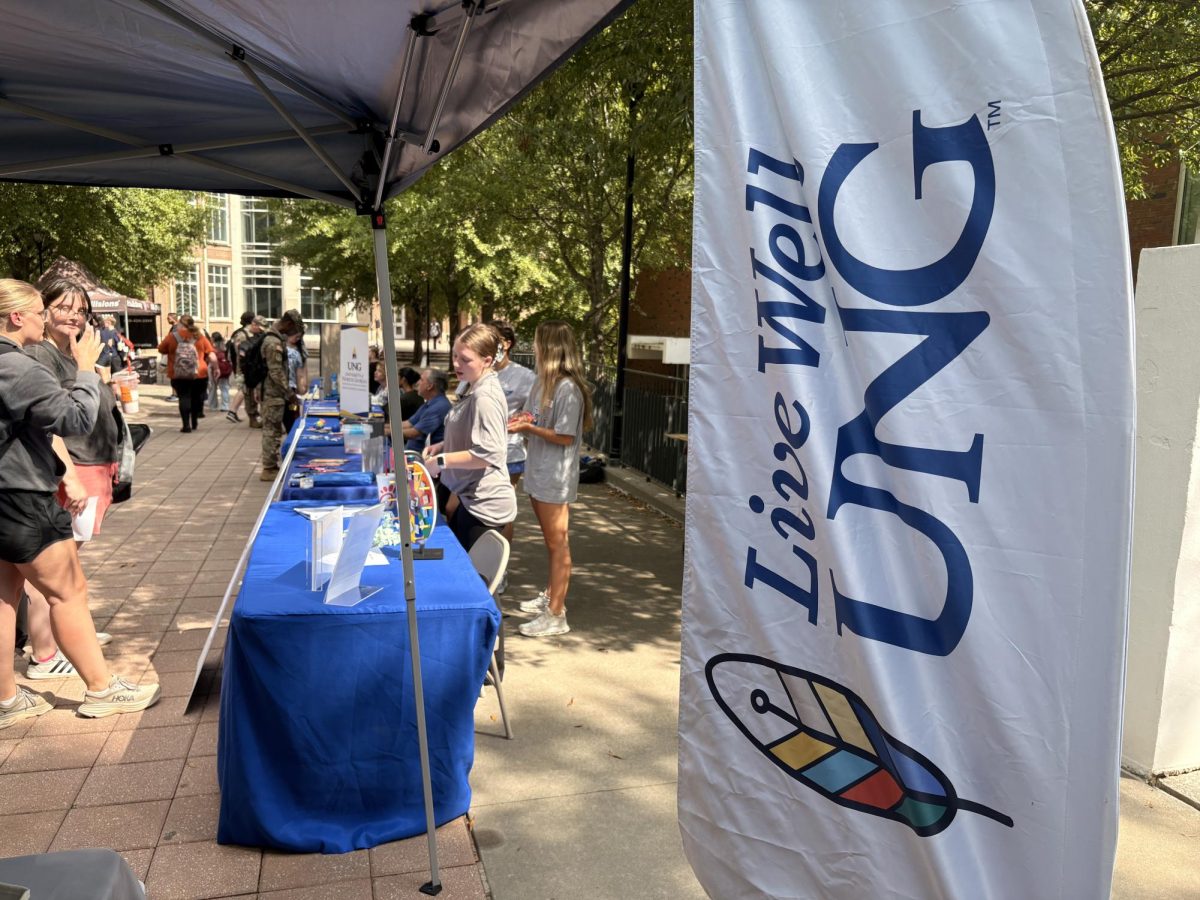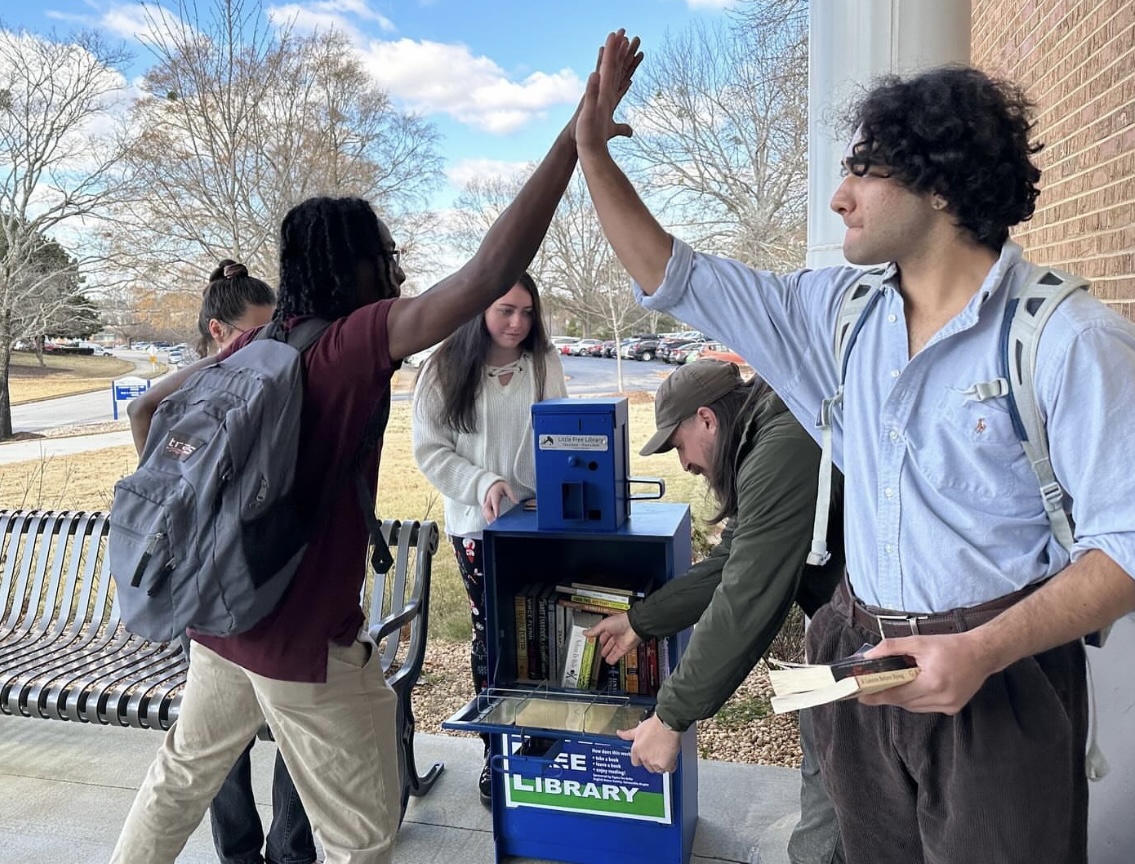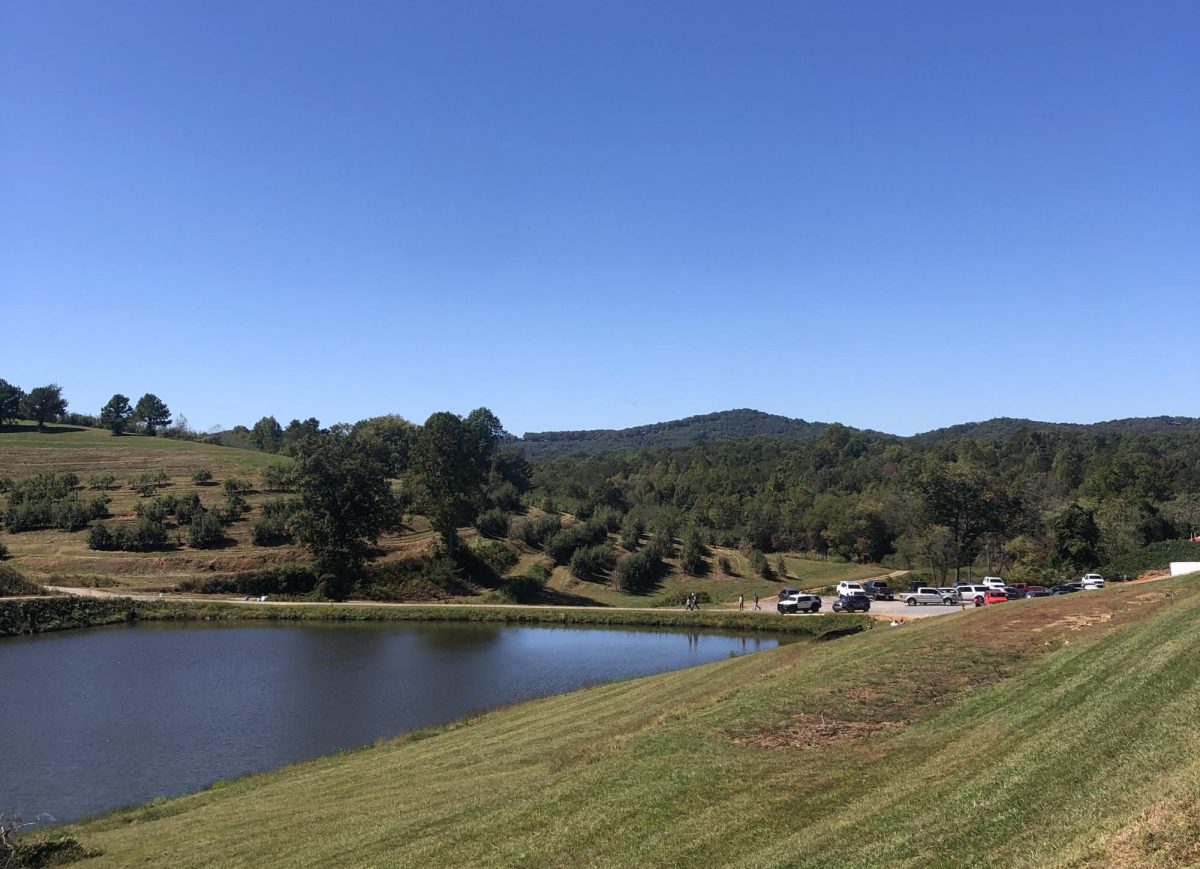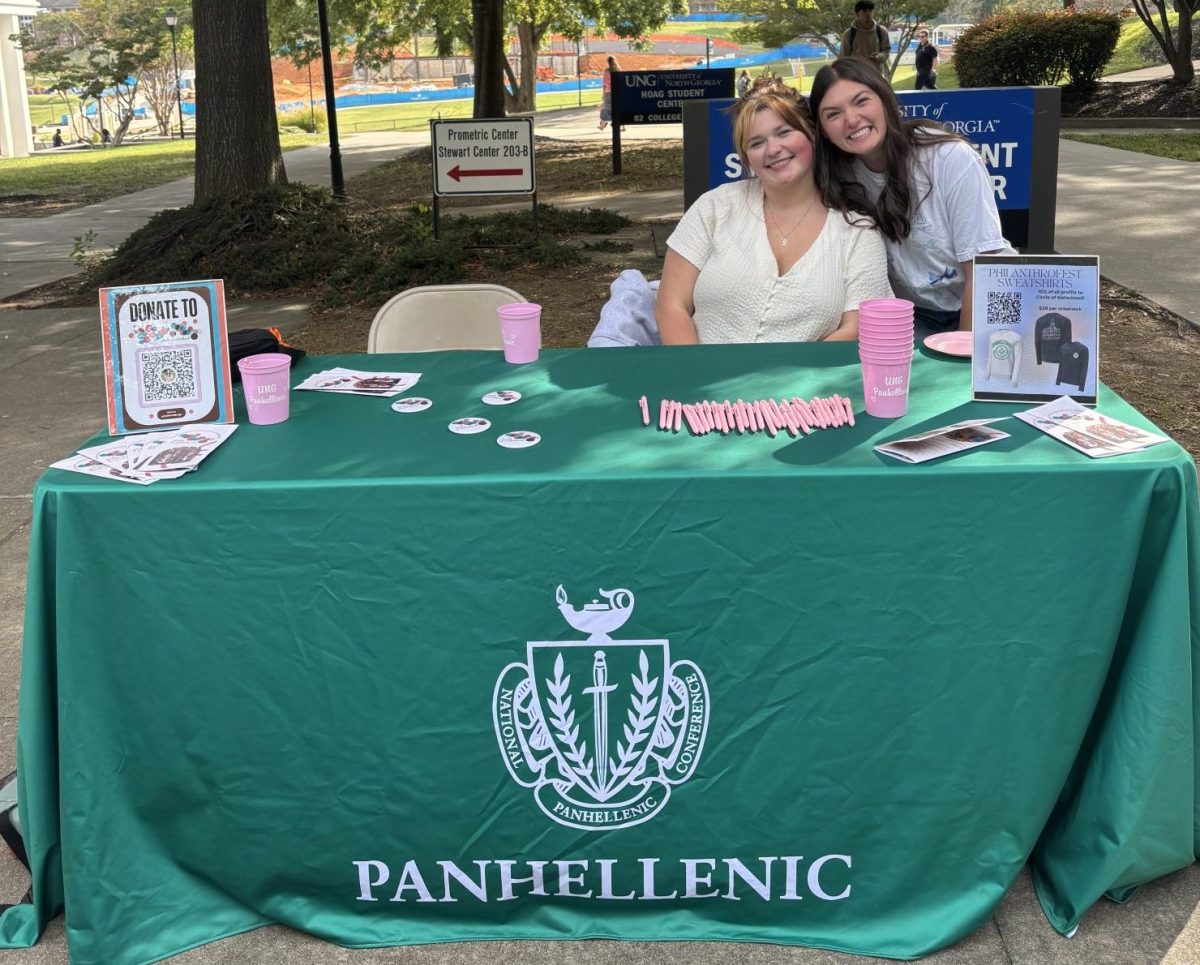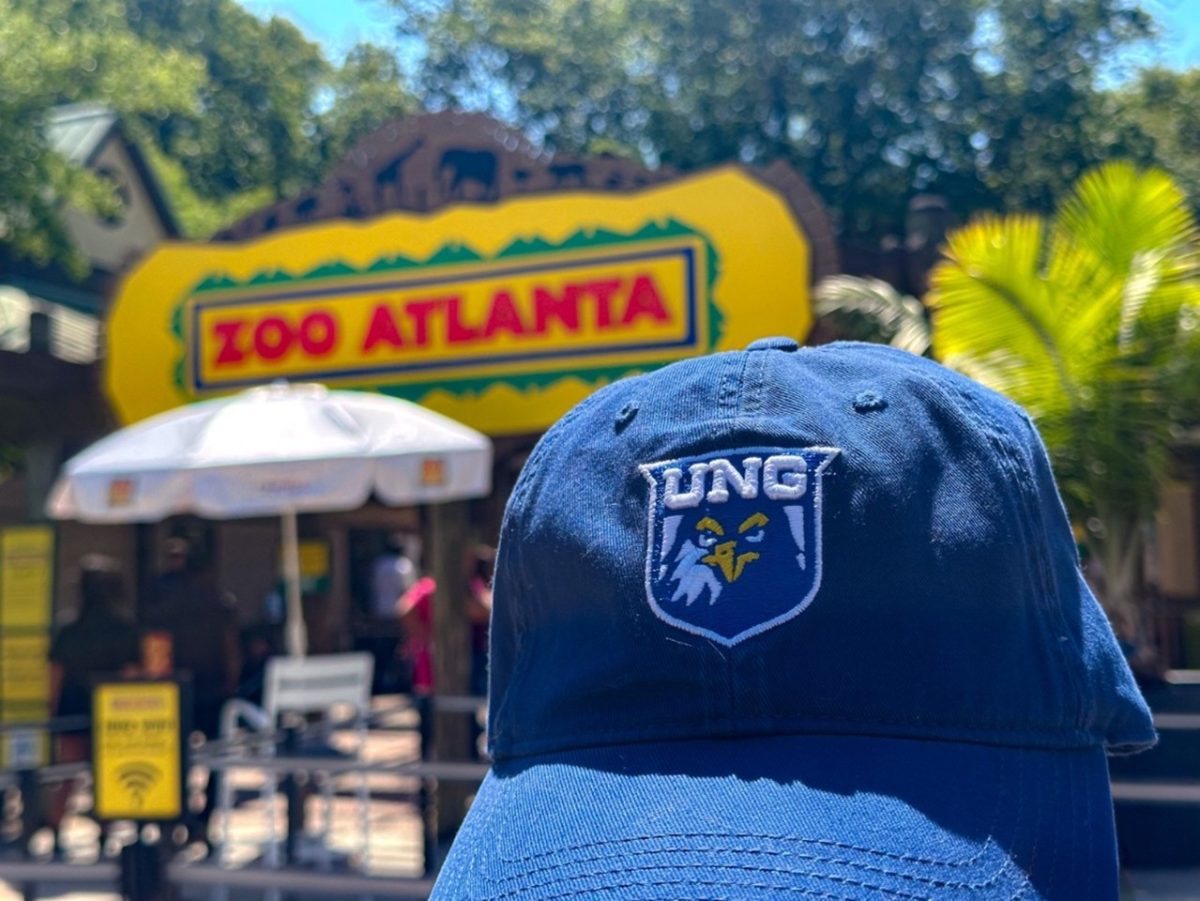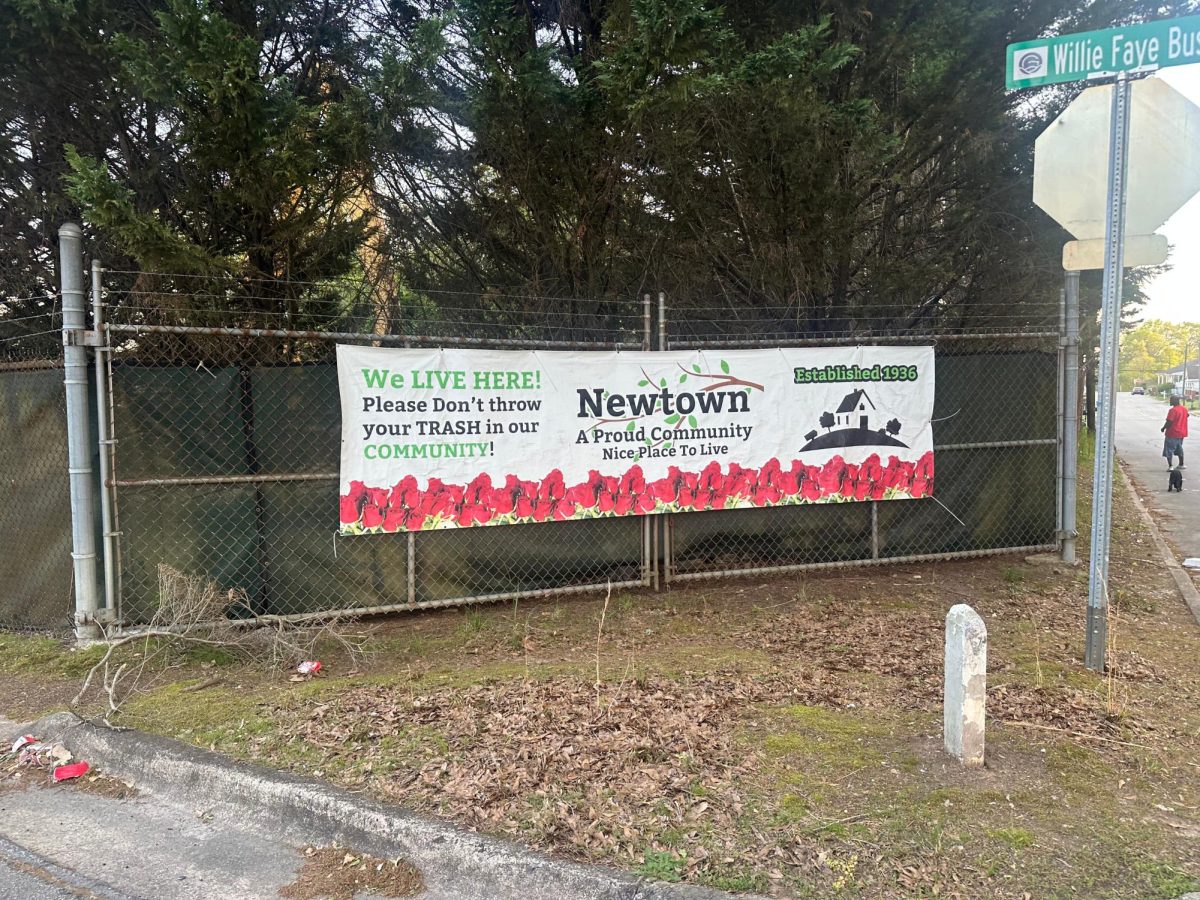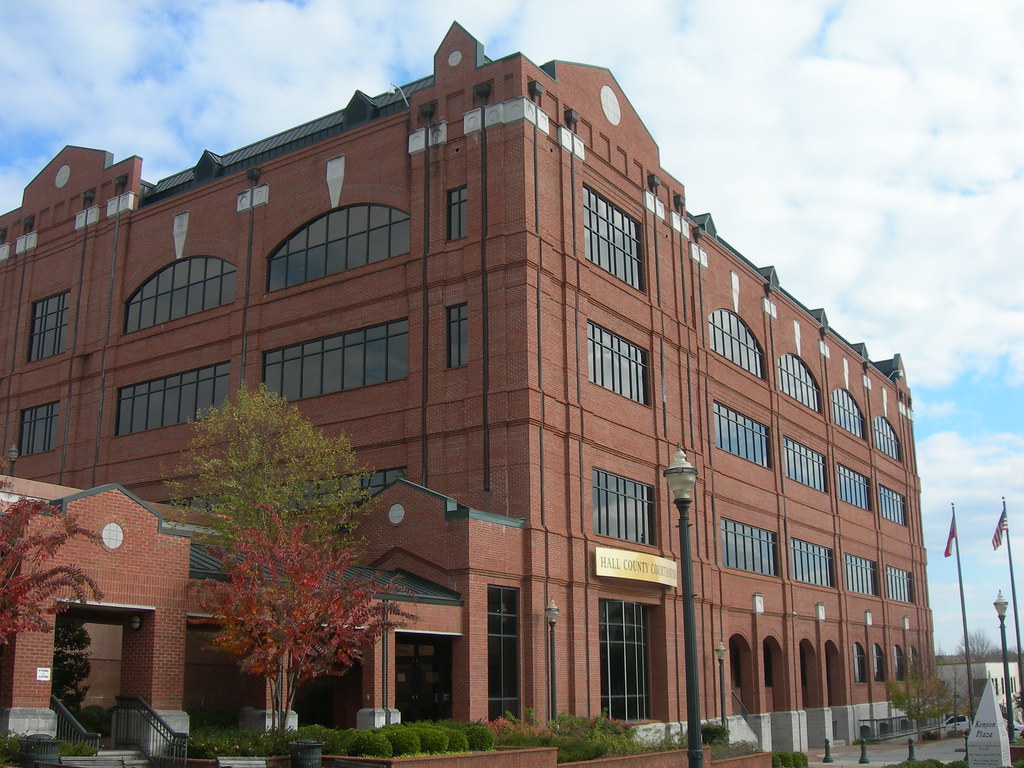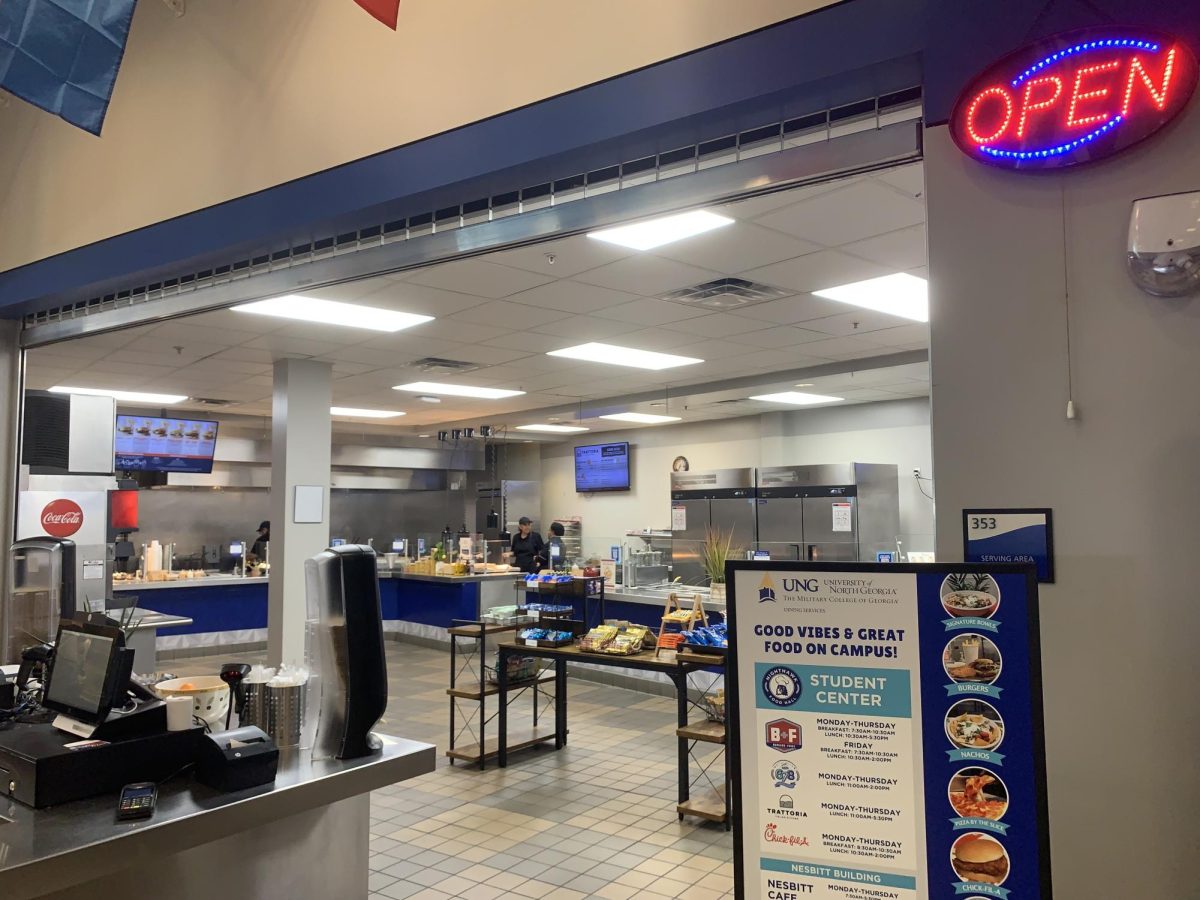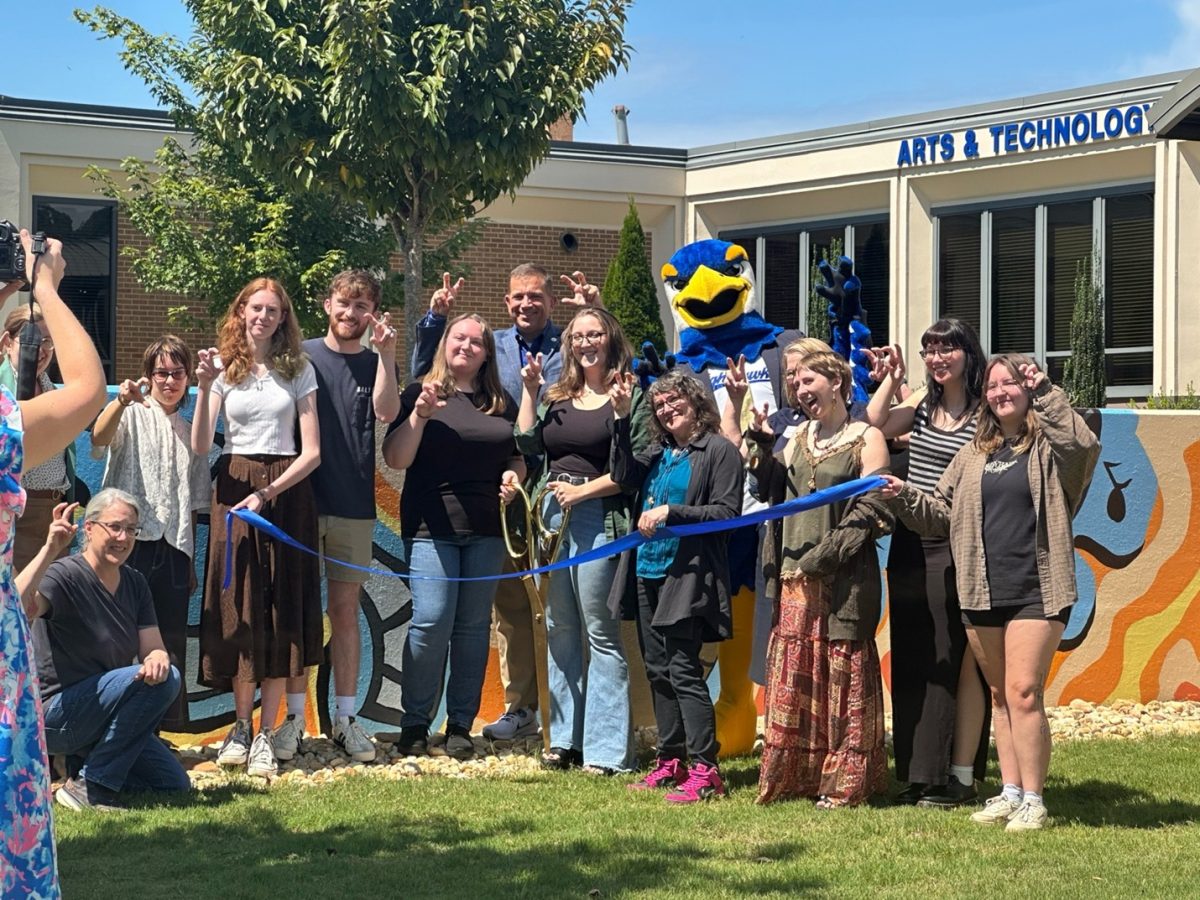In April 1936, the City of Gainesville was devastated by an F-4 tornado that blew directly through the town square at over 260 mph. The storm significantly damaged the city’s business district, 200 people were killed and nearly 800 homes were destroyed. Still segregated at the time, the district that housed Gainesville’s Black and Hispanic population was left almost completely leveled.
As the city began to rebuild, South Carolina-based Daniel Construction Company built 75 homes along Desota and Cloverdale streets to house Black families that were previously displaced by the twister. The neighborhood, known as Newtown, was built on top of a landfill and runs parallel with the city’s train tracks. Throughout the decades since the homes were built, community members have long expressed concern for a variety of health issues impacting the population, including high rates of respiratory illnesses, lupus and throat and mouth cancers.
For over 70 years, a group of women has been fighting for social and environmental justice on behalf of the Newtown community in response to these concerns.
The founding members of the Newtown Florist Club, Ruby Wilkins, Faye Bush, Mozzetta Whelchel and Geraldine Collin, did not initially set out to fight for environmental change in the city. Officially established in 1950, the group aimed to support grieving families who had recently lost loved ones and care for the sick. Known as “Flower Girls,” members would pool their funds to help families purchase flowers for the deceaseds’ funerals or provide other resources to families. As the club became more involved with the neighborhood, members noticed a pattern of young people dying of these diseases.
Nicknamed “The Poultry Capital of the World,” Gainesville has been one of the largest hubs in the country for the industry dating back to the 1940s. In 2022, the Greater Hall Chamber of Commerce reported that the food and poultry processing industry accounted for the employment of over 8,000 people in the area. Most of the facilities, including the Cargill, Purina Feed Mill and Fieldale Farms plants, are less than one mile away from the club’s Desota Street meeting place.
Author of “The Newtown Story: One Community’s Fight for Environmental Justice,” Ellen Griffith Spears explained that as the pattern of illness became more prevalent, members began to take these environmental factors into consideration when examining the health of their community.
“The neighborhood is surrounded by industrial facilities,” Spears said. “There’s a Cargill plant [and] a Purina feed mill plant. Leece-Neville had processed electrical equipment [where] people worked over open vats of trichloroethylene… It worried people to the point that they wanted to have it investigated and figure out just what was going on.”
Spears also described a nearby junkyard as “noxious,” meaning an area that was harmful or unpleasant to those who lived in close proximity to it.
Spears wrote that the club’s first official environmental protest was against the Purina Feed Plant, which had caused neighbors to complain of a “yellow-brown dust” that had settled in the area. Since the facility’s construction just four years after NFC formed, neighbors had also expressed concern for an open sewer ditch that ran between the residences and Desota Street that they believed had been contaminated from the plant. In 1975, the Environmental Protection Division of the Georgia Department of Natural Resources found that the facility was in violation of the Georgia Water Quality Control Act after inspectors had discovered contaminated water from the plant had drained into a nearby storm drain. Despite corrections being ordered, residents continued to see the issue two years later, until a pump was installed at the facility to reduce the problem after outrage from the neighborhood.
In 1995, the community reported two separate instances that year in which Cargill released hexane in the area, sending dozens to the hospital and causing neighbors to evacuate. Prolonged exposure to the chemical can cause nerve-damage and can sometimes lead to a coma or death. While it was believed that the plant’s cleaning process may have been responsible for the emissions, Cargill never admitted responsibility for the incidents. The company did offer to pay the medical bills for those impacted. The NFC filed a lawsuit against Cargill alongside Concerned Citizens Against Pollution in 1997, but the suit was dismissed due to insufficient evidence of injury being provided.
In 1993, Spears was invited by the club to document members as they set out on a “Toxic Tour” to create a list of residents afflicted with the diseases of concern. Led by now NFC Executive Director Rose Johnson, members of the Racial Justice Working Group of the National Council of Churches and local officials, the group tied black ribbons around households that had instances of the illnesses in order to count the totals.
“[The club] learned in the early ’90s that 13 of the 16 toxic reporting sites in Hall County were within a narrow radius of their neighborhood,” Spears said. “That information came from the toxic release inventory, which was a new vehicle that the federal government had developed as a result of the changes in the law in the late ‘80s.”
The Toxic Tour reportedly yielded results that showed a spike in illnesses within Newtown, an anomaly compared to other residential areas in the city. Medical professionals also volunteered their efforts to the community, studying potential environmental factors that could have impacted the neighborhood’s health.
Among them was Environmental and Occupational Health Specialist for Emory University Dr. Howard Frumkin, who found residents had six times the number of cases of lupus compared to communities of its size and demographics. Frumkin’s report did recommend more environmental research should be done, but also stated that the findings indicated prolonged exposure to industrial emissions could be associated with receiving a lupus diagnosis.
Marsha Ardenall got involved with the group at around the age of 12. Despite being born well after the club had been established, Ardenall recalled the impact the founding members had in the community.
“They used to have a summer program that me and my brother were a part of,” Ardenall said. “That’s really how I got involved at that age, mainly just working with the youth whenever they did things. Miss Bush did things for us in the community, block parties, just teaching us. And in the midst of all that, they would also teach us things about the environment.”
Ardenall said the club would teach the community how to gather environmental samples that were also used to advocate for the neighborhood’s health.
“Why, why on this side of town? …Why could I go to other places and not see a whole lot of different companies that would pollute the air?… What if Cargill were to blow up? How do we get out? You know, because we were surrounded around all these companies and that was a concern for me.” – Marsha Ardenall, Newtown Florist Club Member
Almost 30 years after Spears originally published the club’s story, the NFC still continues to advocate for environmental justice in Gainesville. Members frequently host educational town halls, encourage youth to get involved and organize events surrounding environmentalism. The club is also known for encouraging community and economic development and hosting similar events surrounding social justice.
Ardenall said she feels the area has improved over time.
“I’ve seen the changes from when I was younger from when I lived here growing up,” Ardenall said. “The aluminum place that [sic] they actually did clean up the mess, because there used to be [tons] of aluminum, old cars and all kinds of stuff just packed up right behind Newtown … .And now it looks like they’ve cleaned that up. It doesn’t look a mess. You can actually see over there. And so, that’s a good beginning.”
The United States Environmental Protection Agency’s Toxic Releases Index tracks the nationwide management of toxic chemicals typically associated with human health risks. Industrial facilities that handle these chemicals are required to report their management yearly. The “release” of a chemical indicates that it is emitted to the air or water, placed in some type of land disposal or transferred off-site for disposal.
In 2024, Gainesville reportedly had 17 buildings designated as TRI facilities. The index showed that as of October of that year, nearly 650,000 pounds of the substances were disposed of or released. The report showed that about 628,000 pounds were released on-site at the facilities, with the majority of the chemicals reportedly released into the air, while 242 pounds were released into the water. Off-site, over 21,000 pounds were managed.
The index also shows the progress made by these facilities to reduce waste generated from production. The TRI report for 2023 showed 35% of waste was recycled, 33% was disposed of, 29% was treated and 2% was categorized as energy recovery. The top five facilities that had released chemicals included Cargill, Mincey Marble Manufacturing Inc. Hydro Extrusion LLC. Pilgrim’s Pride Gainesville Processing Plant and Mar-Jac Poultry Inc. Cragil reported the most releases, with almost 500,000 pounds released that year.
The index does not indicate which chemicals were released in Gainesville, nor does it provide an analysis as to how the releases could impact community health.
As the city’s industrial development continues to grow, Spears emphasized the importance of continuing the legacy of the group’s efforts.
“Communities are welcoming development, including industrial development, but it can’t be undertaken without serious concerns for safety,” she said. “We know a lot now about what industry is producing and what the safeguards are, lots of measures that people can use in factories. Plants can install scrubbers and various methods of limiting pollution and that should be a part of every expansion effort. It should take into account the safety and the public health of the people who live near these plants and are going to be working there.”





